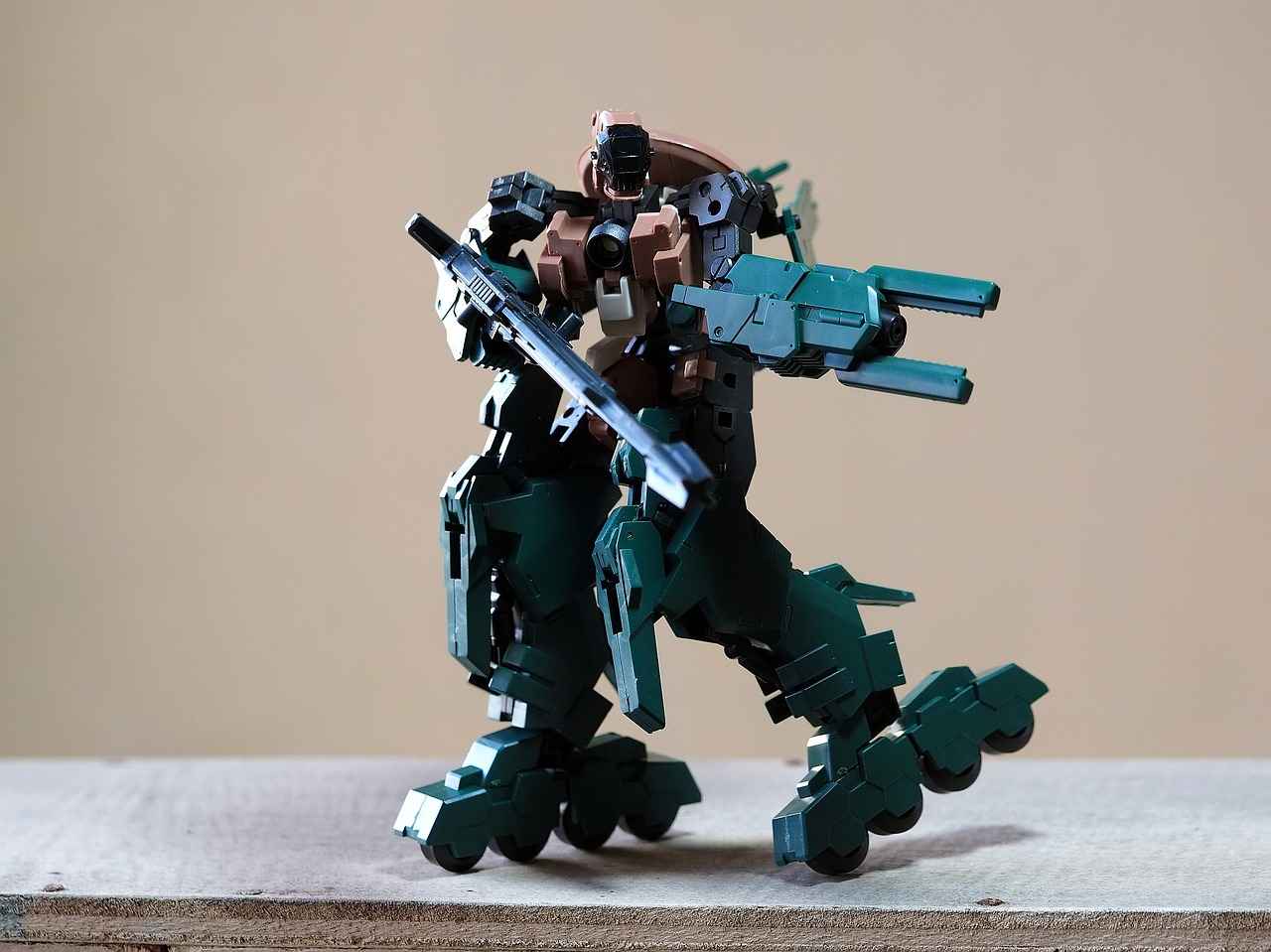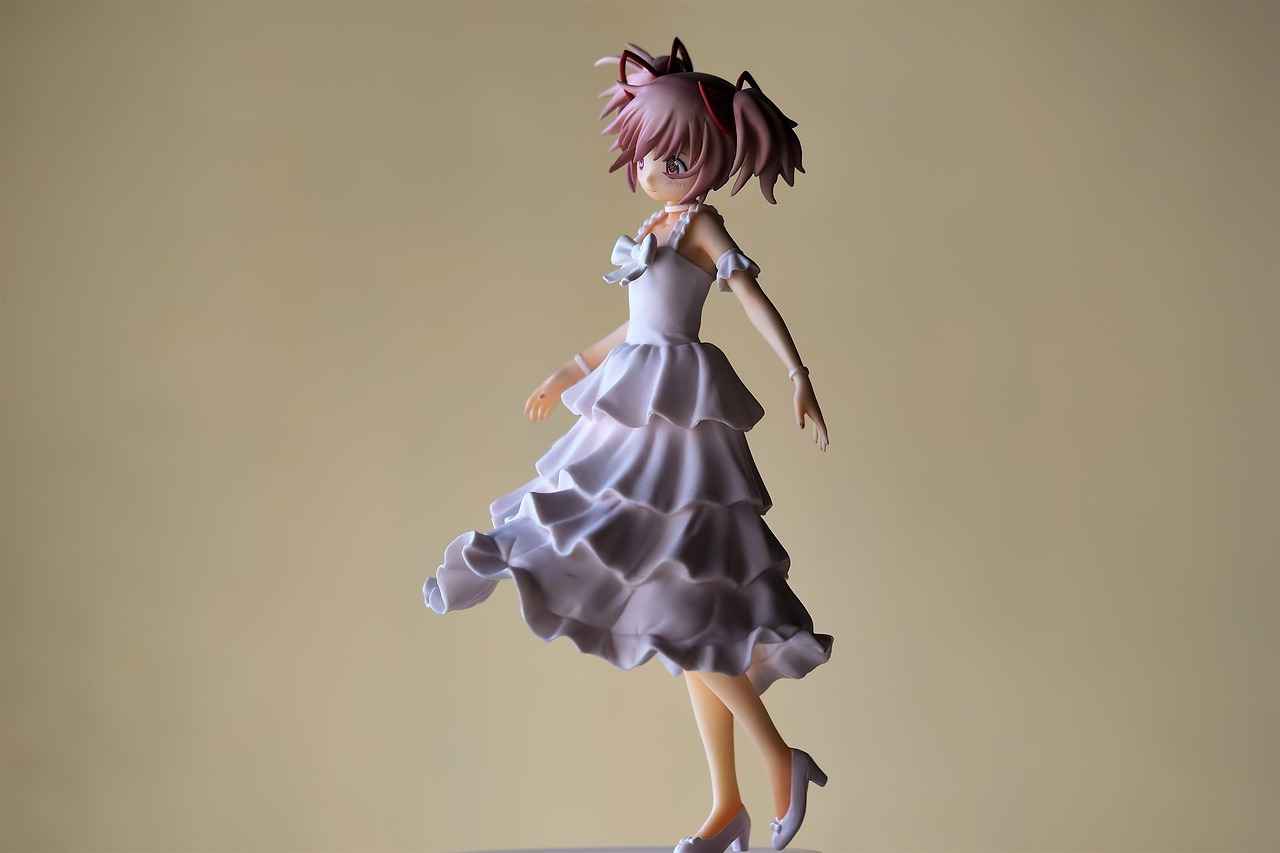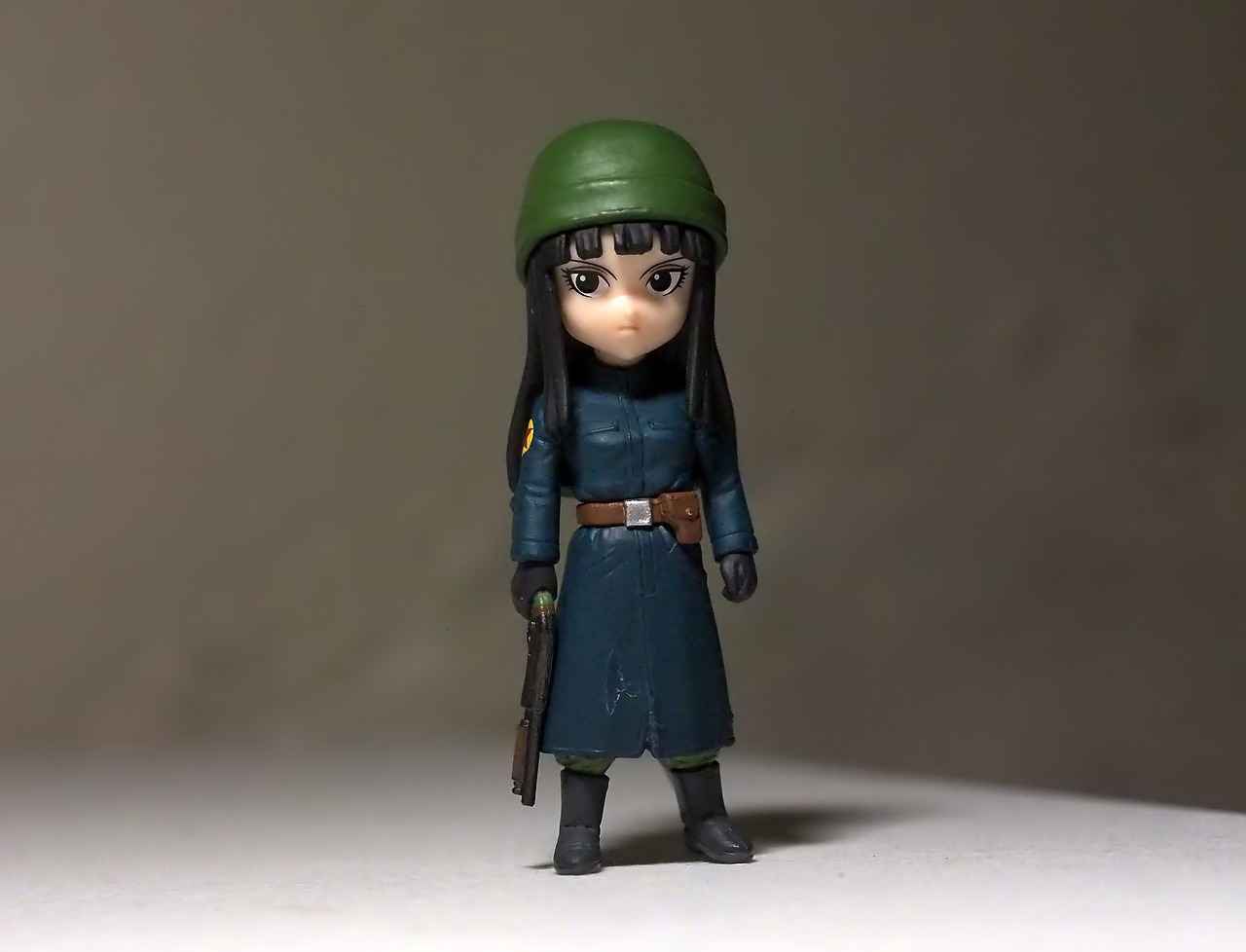This article explores the evolution of mecha anime, tracing its origins, key series, and cultural impact, while highlighting significant milestones and trends in this captivating genre.
The Origins of Mecha Anime
Mecha anime has its roots in the 1960s, where it began as a blend of science fiction and animation. Early influences included works like Tetsujin 28-go and Astro Boy, which laid the groundwork for what would become a rich and diverse genre. These series introduced audiences to giant robots and futuristic technology, sparking interest in the possibilities of mechanized warfare and exploration.
Key Series That Defined the Genre
- Mobile Suit Gundam: Released in 1979, it revolutionized the mecha genre with its complex narratives and character development.
- Neon Genesis Evangelion: Aired in 1995, it redefined mecha anime by incorporating psychological themes and existential questions.
- Code Geass: Known for its strategic warfare and political intrigue, it further expanded the genre’s narrative possibilities.
Mobile Suit Gundam: A Game Changer
Mobile Suit Gundam introduced a new era by focusing on the human aspect of war, featuring characters with depth and moral dilemmas. This series set a new standard for future mecha shows, emphasizing storytelling alongside action.
Impact on Future Mecha Shows
The success of Gundam inspired a plethora of series and spin-offs, influencing storytelling techniques and character arcs throughout subsequent decades. Its merchandising empire, including models and video games, solidified its status in pop culture.
Neon Genesis Evangelion: A New Era
Evangelion challenged traditional genre conventions, resonating with a broader audience by integrating psychological depth and complex themes. This shift in narrative focus broadened the appeal of mecha anime beyond mere action and adventure.
The Evolution of Mecha Design
As technology advanced, so did the design of mechas. This section examines how artistic trends and technological innovations have shaped the visual storytelling of mecha anime.
The Cultural Impact of Mecha Anime
Mecha anime has significantly influenced global pop culture, inspiring various media forms, fashion trends, and even real-world robotics. Its lasting legacy showcases the genre’s relevance and adaptability in a changing world.
The Future of Mecha Anime
As we look ahead, emerging themes such as environmentalism and AI ethics are likely to shape the narratives of future mecha series. Additionally, advancements in animation and virtual reality promise to create immersive experiences that will engage viewers in new and exciting ways.

The Origins of Mecha Anime
Mecha anime, a genre that combines science fiction and animation, has a rich history that dates back to the 1960s. This era marked the beginning of a unique storytelling style that captivated audiences and laid the groundwork for future series. The roots of mecha can be traced to various influences, including early Japanese animation and Western science fiction. As technology advanced, so did the complexity and appeal of mecha narratives.
One of the earliest examples of mecha anime is Tetsujin 28-go, created in 1963, which introduced the concept of giant robots controlled by humans. This series not only showcased the potential of animation but also reflected the post-war sentiments of Japan, where technology was seen as both a marvel and a potential threat.
Another significant series was Astro Boy, also known as Tetsuwan Atom, which debuted in 1963. This series featured a robot boy with human emotions, exploring themes of identity and morality. These early works set the stage for the evolution of mecha anime, paving the way for more complex narratives and character development.
As the genre progressed, the 1970s saw the emergence of more sophisticated mecha series, such as Mobile Suit Gundam, which introduced the concept of mechs as tools of war rather than mere toys. This shift not only changed the portrayal of mechs but also influenced how stories were told, focusing on character motivations and the consequences of warfare.
In summary, the origins of mecha anime are deeply intertwined with cultural and technological shifts in Japan. The genre has evolved significantly since its inception, reflecting societal changes and pushing the boundaries of animation. As we look back at these foundational series, it becomes clear that they have shaped the landscape of modern anime, influencing countless works that followed.

Key Series That Defined the Genre
Mecha anime has seen a remarkable evolution since its inception, with several iconic series that have profoundly influenced the genre. Among these, Mobile Suit Gundam and Neon Genesis Evangelion stand out as pivotal titles that not only popularized mecha themes but also reshaped the landscape of anime storytelling.
- Mobile Suit Gundam: Released in 1979, this series is often credited with revolutionizing the mecha genre. Unlike its predecessors, Gundam introduced a more complex narrative that focused on the human experience amidst warfare, featuring characters with depth and moral dilemmas. The show’s success spawned numerous sequels and spin-offs, establishing a franchise that remains influential to this day.
- Neon Genesis Evangelion: Debuting in 1995, Evangelion took the mecha genre in a new direction by incorporating psychological themes and existential questions. The series challenged traditional conventions, focusing on the emotional struggles of its characters and the implications of piloting giant robots. This shift not only resonated with audiences but also paved the way for more introspective storytelling in anime.
- Code Geass: This series further pushed the boundaries of mecha anime by blending political intrigue with mecha battles. The protagonist, Lelouch, uses his strategic genius and a supernatural power to lead a rebellion, showcasing a unique blend of action and cerebral storytelling.
- Gurren Lagann: Known for its over-the-top action and vibrant animation, Gurren Lagann embraced themes of determination and the human spirit. Its unique style and storytelling resonated with audiences, making it a beloved title in the mecha genre.
The impact of these series extends beyond mere entertainment; they have influenced various aspects of popular culture, inspiring not only subsequent anime but also video games, merchandise, and even academic discussions about the genre’s themes and narratives.
In conclusion, the key series that defined mecha anime have left an indelible mark on the genre, each contributing unique elements that continue to inspire creators and engage audiences worldwide.
Mobile Suit Gundam: A Game Changer
Mobile Suit Gundam, released in 1979, marked a significant turning point in the mecha genre, redefining how stories could be told within animated series. Prior to Gundam, mecha shows often presented giant robots as mere tools for battle, with little focus on character development or complex narratives. However, Gundam broke this mold by introducing a rich tapestry of characters, each with their own motivations, struggles, and growth arcs.
This series not only showcased epic battles between mobile suits but also delved into the political and social implications of war. The conflict between the Earth Federation and the Principality of Zeon was not just a backdrop; it served as a vehicle for exploring themes of humanity, conflict, and moral ambiguity. Audiences were drawn into the emotional struggles of characters like Amuro Ray and Char Aznable, making them relatable and memorable.
Gundam’s impact extended beyond storytelling. It set a new standard for mecha design, blending realistic mechanics with imaginative aesthetics. The iconic mobile suits, such as the RX-78-2, became symbols of the franchise, inspiring countless designs in future anime. This attention to detail not only enhanced the visual appeal but also allowed fans to connect with the technology and its implications.
Furthermore, the success of Mobile Suit Gundam paved the way for a plethora of spin-offs and adaptations, establishing a vast universe that continues to expand today. The franchise has become a cultural phenomenon, influencing not only other anime series but also video games, merchandise, and even real-world robotics.
In conclusion, Mobile Suit Gundam was more than just a television series; it was a cultural milestone that transformed the mecha genre. It introduced a level of depth and complexity that resonated with audiences, inspiring future creators to explore the potential of animated storytelling.
Impact on Future Mecha Shows
The success of Mobile Suit Gundam has undeniably shaped the landscape of mecha anime, paving the way for numerous series and spin-offs that followed. Its innovative approach to storytelling and character development introduced a level of complexity that was previously unseen in the genre. This transformation not only captivated audiences but also set a new benchmark for narrative depth in mecha series.
Gundam’s influence can be observed in various aspects of subsequent mecha shows. For instance, many series began to incorporate multi-dimensional characters with rich backstories and personal conflicts. This shift encouraged viewers to engage more deeply with the characters, fostering emotional connections that enhanced the overall viewing experience.
Furthermore, Gundam’s exploration of themes such as war, morality, and the human condition resonated with audiences, prompting future creators to delve into similar complex topics. As a result, many mecha series adopted a more serious tone, often addressing philosophical questions and societal issues, which helped to elevate the genre beyond mere entertainment.
In addition to thematic depth, Gundam’s success also inspired a plethora of spin-offs and adaptations that expanded its universe. This trend encouraged studios to experiment with different storytelling techniques and artistic styles. For example, the incorporation of CGI technology in newer series has allowed for more dynamic action sequences and visually stunning mecha designs.
Moreover, the merchandising strategies employed by the Gundam franchise have set a precedent for future shows. The extensive range of products, from model kits to video games, has demonstrated the commercial viability of mecha anime, leading to more investments in similar projects.
In conclusion, the impact of Mobile Suit Gundam on future mecha shows is profound and far-reaching. By redefining narrative structures and character development, it has not only influenced the mecha genre but has also left an indelible mark on the broader landscape of anime. As new series continue to emerge, the legacy of Gundam remains a guiding force, inspiring creators to push the boundaries of storytelling in the mecha realm.
Merchandising and Cultural Phenomenon
The Gundam franchise has transcended its origins as a mere anime series, evolving into a multifaceted cultural phenomenon that has significantly impacted global pop culture. This expansion is largely attributed to its innovative approach to merchandising, which has created a vast empire encompassing models, video games, films, and more.
One of the most notable aspects of Gundam’s merchandising success is the plastic model kits, commonly known as Gunpla. These model kits have become a staple for fans and hobbyists alike, allowing them to engage with the franchise on a personal level. The meticulous construction and customization options available in Gunpla have led to a dedicated community of builders and collectors, further solidifying Gundam’s presence in the hobbyist market.
In addition to model kits, Gundam has ventured into the realm of video games. Numerous titles across various platforms have been released, allowing fans to experience the Gundam universe interactively. These games range from strategic battle simulations to immersive role-playing experiences, catering to different preferences within the gaming community.
The franchise’s impact extends to films and animated series as well. With numerous adaptations and spin-offs, Gundam has consistently pushed the boundaries of storytelling in anime. Each new release often garners significant attention, drawing both long-time fans and newcomers to the franchise.
| Type of Merchandise | Description |
|---|---|
| Gunpla | Plastic model kits that allow fans to build and customize their own Gundam models. |
| Video Games | Interactive experiences that range from strategy to action-adventure, allowing fans to engage with the Gundam universe. |
| Films | Adaptations and original films that expand the Gundam narrative and attract new audiences. |
Overall, the merchandising strategies employed by the Gundam franchise have not only generated substantial revenue but have also fostered a vibrant community of fans. This community, united by their passion for Gundam, has contributed to the franchise’s enduring legacy and cultural significance.
Neon Genesis Evangelion: A New Era
Neon Genesis Evangelion, released in 1995, marked a pivotal moment in the history of mecha anime, as it transcended the genre’s traditional boundaries. Unlike its predecessors, which often focused on action and adventure, Evangelion delved into psychological complexities and existential dilemmas, inviting viewers to explore deep themes such as identity, trauma, and the human condition.
This series introduced audiences to a new kind of storytelling, where the mecha were not merely machines but extensions of their pilots’ psyches. The protagonist, Shinji Ikari, embodies the struggles of adolescence and the quest for self-acceptance, making his journey relatable to a broader audience. The narrative’s intricate layering of personal and philosophical questions set a new standard for character development in anime.
Moreover, Evangelion’s artistic style, characterized by its unique character designs and striking visuals, played a significant role in its impact. The series combined traditional animation techniques with innovative storytelling methods, resulting in a visually stunning and emotionally resonant experience. The use of religious symbolism and psychological references further enriched the narrative, prompting extensive analysis and discussion among fans and scholars alike.
As a result of its profound themes and groundbreaking approach, Neon Genesis Evangelion has left an indelible mark on the anime industry and has influenced countless creators. It challenged the status quo of mecha anime, encouraging future series to explore more profound narratives and character arcs. This shift not only expanded the genre’s audience but also elevated anime as a legitimate form of artistic expression.
In conclusion, Evangelion’s legacy is not merely that of a mecha series but as a cultural phenomenon that reshaped the landscape of anime. Its exploration of the human psyche and existential questions continues to resonate with audiences worldwide, ensuring its place in the pantheon of anime classics.

The Evolution of Mecha Design
is a fascinating journey that showcases how technology and artistry have intertwined to create some of the most iconic machines in animation history. As we delve into this topic, we will explore the various factors that have shaped mecha design over the years, including technological advancements, artistic movements, and cultural influences.
Initially, mecha designs were relatively simple, reflecting the limitations of animation technology in the early days. However, as animation techniques progressed, particularly with the advent of computer-generated imagery (CGI), the complexity and dynamism of mechs significantly increased. This evolution allowed for more intricate designs, enabling creators to push the boundaries of imagination and functionality.
- Technological Advancements: The shift from traditional hand-drawn animation to CGI has revolutionized the way mechs are depicted. With CGI, animators can create smoother movements and more detailed textures, enhancing the overall visual experience.
- Artistic Trends: Various artistic movements, from the sleek aesthetics of Art Deco to the gritty realism of modern designs, have influenced mecha appearances. These artistic choices reflect broader cultural shifts and audience preferences, making mechs not just machines but also symbols of their respective eras.
- Functionality and Design: As technology advanced, so did the functionality of mechs. Modern designs often incorporate features such as transformability, advanced weaponry, and even AI capabilities, making them more than mere robots; they are complex characters with their own narratives.
Furthermore, the cultural context in which mecha anime is produced plays a crucial role in shaping design choices. For instance, the rise of environmental consciousness has led to the creation of mechs that embody eco-friendly technologies, showcasing a blend of artistic vision with real-world concerns.
In conclusion, the evolution of mecha design is a testament to the synergy between artistic creativity and technological innovation. As we look to the future, it is clear that mecha designs will continue to evolve, reflecting the changing landscape of both animation and society.
Technological Advancements in Animation
have significantly transformed the landscape of mecha anime, enabling creators to push the boundaries of imagination and storytelling. With the evolution of animation technology, we have witnessed a remarkable shift in how mechs are designed and portrayed on screen.
In the early days of mecha anime, such as the classic Mobile Suit Gundam, the animation was primarily hand-drawn, which limited the complexity of designs and movements. However, as technology advanced, the introduction of computer-generated imagery (CGI) allowed for more intricate and detailed mecha designs. This shift not only enhanced the visual appeal but also facilitated more dynamic action sequences, captivating viewers in ways previously unimaginable.
Furthermore, advancements in 3D modeling and animation software have enabled artists to create mechs that are not only visually stunning but also realistic in their movements. This realism contributes to a more immersive viewing experience, allowing audiences to connect with the characters and their mechanical counterparts on a deeper level.
- Enhanced Visual Storytelling: The ability to create complex mecha designs has enriched the narrative capabilities of anime, allowing for stories that explore intricate themes and character development.
- Viewer Engagement: Dynamic animations and lifelike movements keep viewers on the edge of their seats, fostering a stronger emotional investment in the plot and characters.
- New Artistic Styles: The integration of various artistic techniques, including hybrid styles that combine traditional animation with CGI, has broadened the visual language of mecha anime.
As we look to the future, the continuous evolution of animation technology promises to unlock even more possibilities for mecha anime. Innovations such as virtual reality (VR) and augmented reality (AR) are poised to create immersive experiences that draw viewers into the world of mechs like never before.
In conclusion, the advancement of animation technology has not only enhanced the aesthetic quality of mecha designs but has also transformed the way stories are told in this genre. As technology continues to evolve, we can expect even more exciting developments that will shape the future of mecha anime.
Artistic Influences and Styles
The world of mecha anime is a vibrant tapestry woven from a variety of artistic influences and styles. Over the decades, this genre has evolved significantly, showcasing the transition from traditional hand-drawn techniques to cutting-edge CGI. Each artistic approach has contributed to the unique aesthetics that define mecha anime today.
Traditional Hand-Drawn Techniques
In the early days of mecha anime, artists relied heavily on hand-drawn animation. This method allowed for intricate detailing and a personal touch that is often associated with classic series. Shows like Mobile Suit Gundam utilized these techniques to create memorable characters and dynamic mecha designs, capturing the imagination of audiences worldwide.
Transition to Digital Animation
As technology advanced, the industry began embracing digital animation. This shift not only improved production efficiency but also expanded creative possibilities. Series like Neon Genesis Evangelion showcased how digital techniques could enhance emotional storytelling, allowing for more expressive visuals that resonated with viewers.
Modern CGI Innovations
Today, CGI plays a crucial role in the production of mecha anime. This technology enables the creation of highly detailed and complex mechs, bringing to life epic battles and intricate environments. The use of CGI has allowed series to push the boundaries of visual storytelling, engaging audiences with stunning visuals that were previously unimaginable.
Cultural Reflections
The evolution of artistic styles in mecha anime also reflects broader cultural shifts and audience preferences. As societal values and technological advancements change, so too do the themes and aesthetics of mecha anime. This ongoing dialogue between art and culture ensures that the genre remains relevant and appealing to new generations of fans.
In conclusion, the artistic influences and styles in mecha anime have undergone remarkable transformations. From hand-drawn techniques to modern CGI, each phase has shaped the genre’s aesthetics, reflecting not only artistic innovation but also the cultural landscape of its time.

The Cultural Impact of Mecha Anime
has been profound, resonating across various facets of global pop culture. This genre, which features giant robots often piloted by humans, has not only captivated audiences but has also inspired a myriad of media forms, fashion trends, and even advancements in real-world robotics.
Mecha anime, beginning with classics like Mobile Suit Gundam and Neon Genesis Evangelion, has shaped the way stories are told in animation. Its influence extends beyond television screens, permeating into video games, movies, and even literature. The intricate narratives and character developments found in these series have set a benchmark that many creators strive to achieve.
One of the most significant impacts of mecha anime is its ability to inspire real-world robotics. Engineers and designers often draw inspiration from the complex mechanics and designs of mechs portrayed in these series. This has led to innovations in robotics, as seen in projects that attempt to create functional robots resembling their animated counterparts.
| Influence Area | Examples |
|---|---|
| Media | Video games like Armored Core and films such as Pacific Rim |
| Fashion | Streetwear inspired by mecha aesthetics and designs |
| Robotics | Projects like Gundam Factory Yokohama |
Moreover, the genre has sparked a cultural phenomenon, with conventions and fan gatherings celebrating its legacy. The emergence of cosplay, where fans dress as their favorite mecha characters, has further solidified the genre’s cultural relevance. This engagement fosters a community that not only appreciates the art form but also contributes to its evolution.
In conclusion, the cultural impact of mecha anime is undeniable. Its ability to inspire various forms of media, influence fashion trends, and contribute to advancements in technology showcases its lasting legacy and relevance in today’s society. As the genre continues to evolve, it will undoubtedly inspire future generations, leaving an indelible mark on global pop culture.
Global Reach and Influence
The phenomenon of mecha anime has transcended its origins in Japan, capturing the imaginations of audiences worldwide. This genre, characterized by its giant robots and intricate narratives, has seen a significant rise in popularity outside its home country, leading to a fusion of cultures and storytelling styles. As a result, mecha anime has not only influenced other forms of media but has also carved out a unique space in the global entertainment landscape.
One of the key factors behind the international appeal of mecha anime is its ability to resonate with universal themes such as conflict, identity, and the human condition. Series like Mobile Suit Gundam and Neon Genesis Evangelion have become cultural touchstones, inspiring fans from various backgrounds to engage with their complex narratives and character arcs. This engagement has led to a burgeoning community of fans who actively participate in discussions, fan art, and cosplay, further solidifying the genre’s presence on a global scale.
Moreover, the success of mecha anime has prompted numerous adaptations and collaborations across different media. For instance, several popular video games have drawn inspiration from mecha series, allowing players to pilot their favorite robots in immersive environments. Additionally, Western adaptations, such as movies and comics, have attempted to capture the essence of mecha anime, albeit with varying degrees of success.
In recent years, the rise of streaming platforms has also played a pivotal role in the globalization of mecha anime. With platforms like Netflix and Crunchyroll offering a vast library of titles, fans from all corners of the globe can easily access and enjoy these series. This accessibility has fostered a greater appreciation for the genre, encouraging new viewers to explore its rich history and diverse offerings.
In conclusion, the of mecha anime illustrate its capacity to connect with audiences beyond cultural boundaries. As the genre continues to evolve, it is likely that we will see even more innovative collaborations and adaptations that highlight its enduring appeal and relevance in the ever-changing landscape of entertainment.
Mecha in Video Games and Other Media
Mecha anime has transcended its origins in Japanese animation to become a powerful influence across various media, including video games, manga, and films. This section delves into how mecha themes have permeated these platforms, creating a rich tapestry that continues to engage and inspire fans worldwide.
With the rise of technology and interactive storytelling, video games have become a significant medium for exploring mecha concepts. Titles like Armored Core and Gundam Versus allow players to pilot giant robots in immersive environments, offering a hands-on experience that anime cannot replicate. These games often feature intricate customization options, enabling players to design their own mechs, which adds a personal touch to the gameplay.
Moreover, the mechanics of these games often reflect the complex narratives present in mecha anime. For instance, Mobile Suit Gundam: Battle Operation incorporates strategic elements that echo the tactical battles seen in the anime, emphasizing teamwork and strategy. This alignment between gameplay and narrative not only attracts fans of the genre but also introduces new audiences to the rich storytelling found in mecha anime.
In addition to video games, mecha themes have significantly influenced manga and films. Series like Code Geass and Gurren Lagann have expanded the genre’s storytelling possibilities, incorporating political intrigue and personal struggles within their mecha battles. These narratives often challenge traditional hero archetypes, providing deeper character development that resonates with viewers.
Furthermore, the cultural impact of mecha anime has led to collaborations with major film studios, resulting in live-action adaptations that attempt to capture the essence of the original series. While opinions on these adaptations vary, they highlight the enduring popularity and relevance of mecha themes in contemporary storytelling.
In conclusion, the influence of mecha anime on video games, manga, and films is profound and multifaceted. As the genre continues to evolve, it remains a vital part of global pop culture, inspiring new generations of creators and fans alike.

The Future of Mecha Anime
As the genre of mecha anime continues to evolve, it is increasingly shaped by new trends and technologies that promise to redefine the landscape of future series. This section explores potential directions and innovations that may characterize upcoming mecha anime, focusing on emerging themes, technological advancements, and audience engagement.
- Emerging Themes and Narratives
- Future mecha anime may delve into themes such as environmentalism and artificial intelligence ethics. These themes resonate with contemporary societal concerns, allowing creators to connect with younger audiences who are increasingly aware of these issues.
- Storytelling may shift towards more character-driven narratives, emphasizing personal growth and moral dilemmas faced by pilots and their mechs, rather than solely focusing on epic battles.
- Technological Innovations in Production
- Advancements in animation technology, including the use of CGI and virtual reality, are set to transform how mecha anime is produced. These technologies can create more immersive experiences, allowing audiences to feel as if they are part of the story.
- Integration of interactive elements may become common, enabling viewers to influence the narrative or engage with characters in new ways, thus enhancing viewer investment in the story.
- Global Collaborations and Cross-Media Integration
- With the global reach of mecha anime, collaborations between Japanese studios and international creators are likely to increase, resulting in diverse storytelling that blends different cultural perspectives.
- Furthermore, the integration of mecha anime into video games and other media formats can expand the audience base, creating a richer universe that fans can explore across various platforms.
In conclusion, the future of mecha anime appears bright and full of potential. By embracing new themes, leveraging technological advancements, and fostering global collaborations, the genre is poised to continue captivating audiences worldwide. As viewers’ expectations evolve, so too will the stories and experiences that mecha anime has to offer.
Emerging Themes and Narratives
Emerging Themes and Narratives in Future Mecha AnimeAs the world evolves, so does the storytelling landscape of mecha anime. In the coming years, we can anticipate a shift in themes that reflect pressing societal issues. This evolution will not only captivate long-time fans but also resonate deeply with younger audiences who are increasingly aware of global challenges.
- Environmentalism: Future mecha series are likely to address environmental concerns, showcasing the impact of technology on nature. With climate change becoming a significant issue, narratives may explore the balance between technological advancement and ecological preservation. Mechs could be depicted as tools for restoration, or conversely, as agents of destruction, prompting viewers to reflect on their relationship with the environment.
- AI Ethics: As artificial intelligence becomes more integrated into our lives, mecha anime may delve into the ethical implications of AI. Questions surrounding autonomy, control, and the moral responsibilities of creators could be central to future plots. These narratives may challenge viewers to consider the consequences of sentient machines and the ethical dilemmas they present.
- Social Justice: Another emerging theme could be the exploration of social justice issues. Mecha anime might portray struggles against oppression and inequality, using giant robots as symbols of rebellion and hope. This could lead to rich storytelling that resonates with movements for equality and justice in our contemporary society.
- Identity and Humanity: Future series may also explore the concept of identity, particularly in relation to cyborgs and AI. Questions about what it means to be human, the nature of consciousness, and the blending of human and machine could provide fertile ground for compelling narratives.
In conclusion, the future of mecha anime promises to be a rich tapestry of themes that reflect our evolving society. By tackling pertinent issues such as environmentalism and AI ethics, these narratives will not only entertain but also provoke thought and inspire change among viewers.
Technological Innovations in Production
The landscape of mecha anime is on the brink of a significant transformation, primarily due to advancements in animation technology and virtual reality. These innovations are not just enhancing the visual quality of the animation but are also set to create immersive experiences that engage viewers on a deeper level.
One of the most notable advancements is the use of real-time rendering technologies, which allow animators to create complex scenes with greater efficiency. This technology enables the integration of detailed environments and dynamic character movements, making the mechs appear more lifelike and responsive. As a result, viewers can enjoy a richer visual narrative that enhances the storytelling experience.
Moreover, the incorporation of virtual reality (VR) is revolutionizing how audiences interact with mecha anime. By utilizing VR headsets, viewers can step inside the world of their favorite series, experiencing battles and dramatic moments from a first-person perspective. This level of immersion not only captivates the audience but also allows for a more personal connection to the characters and their journeys.
In addition to VR, advancements in augmented reality (AR) are also playing a pivotal role. AR applications can bring characters and mechs into the real world, allowing fans to interact with them through their smartphones or tablets. This interaction fosters a sense of community among fans, as they can share their experiences and creations online.
Furthermore, the use of AI-driven animation tools is streamlining production processes. These tools assist animators in generating fluid movements and realistic expressions, reducing the time and effort required to produce high-quality content. As a result, creators can focus more on storytelling and character development, leading to richer narratives.
In conclusion, the future of mecha anime is bright, with technological innovations paving the way for more engaging and immersive experiences. As these advancements continue to evolve, they will undoubtedly reshape the genre, drawing in new audiences and retaining long-time fans.
